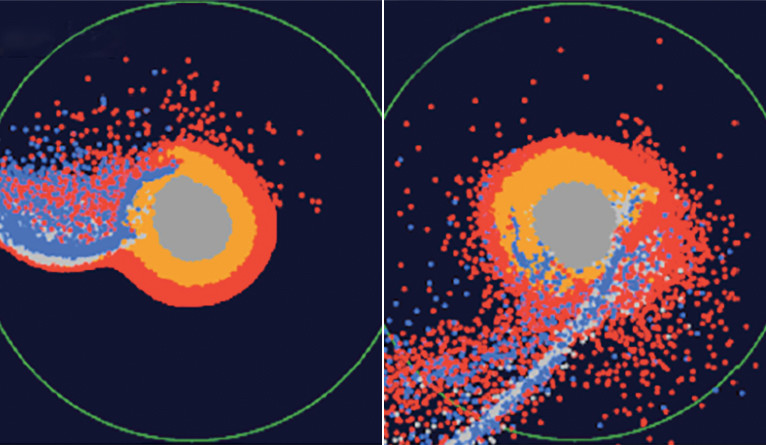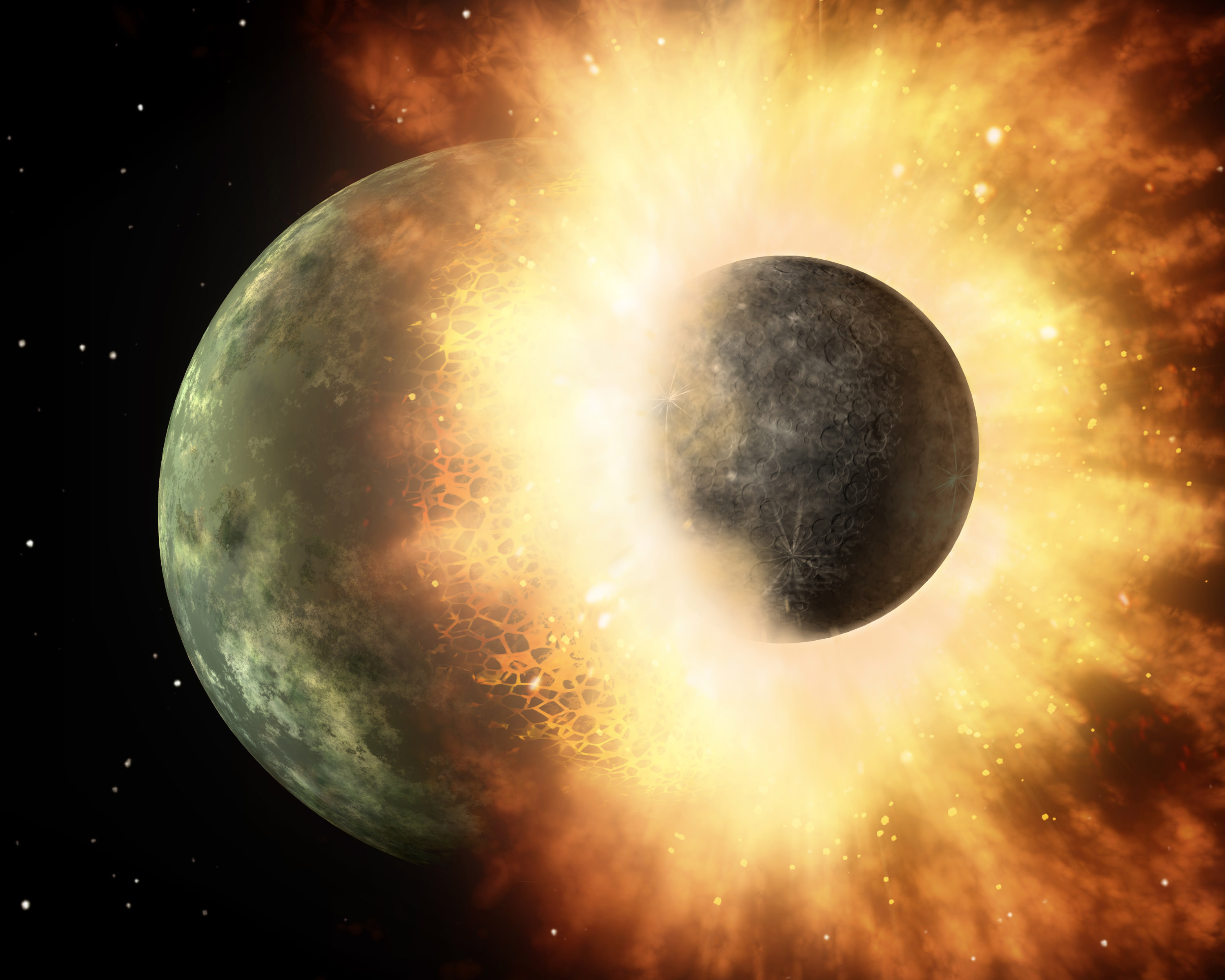According to the most widely-accepted theory, the Moon formed roughly 4.5 billion years ago when a Mars-sized object named Theia collided with Earth (aka. the Giant Impact Hypothesis). This impact threw up considerable amounts of debris which gradually coalesced to form Earth’s only natural satellite. One of the most compelling proofs for this theory is the fact that the Earth and the Moon are remarkably similar in terms of composition.
However, previous studies involving computer simulations have shown that if the Moon were created by a giant impact, it should have retained more material from the impactor itself. But according to a new study conducted by a team from the University of New Mexico, it is possible that the Earth and the Moon are not as similar as previously thought.
The study that describes their findings, titled “Distinct oxygen isotope compositions of the Earth and Moon“, recently appeared in the journal Nature Geoscience. The study was conducted by Erick J. Cano and Zachary D. Sharp of UNM’s Department of Earth and Planetary Sciences, and Charles K. Shearer of UNM’s Institute of Meteoritics.
The theory that the Earth and the Moon were once a single body has existed since the 19th century. But it was not until rock samples were brought back by the Apollo astronauts that scientists had definitive evidence that Earth and the Moon formed together. These samples showed that like Earth, the Moon was composed of silicate minerals and metals differentiated between a metal core and a silicate mantle and crust.
While the Moon has less iron and less in the way of lighter elements, the Giant Impact Hypothesis explains this quite well. Iron, a particularly heavy element, would have been retained by Earth while the heat and explosive force of the impact caused the lighter elements to boil off and be ejected into space. The rest of the material from Earth and Theia would have then cooled and then mixed to form the Earth and Moon as we know them today.
This theory also explains the speed and nature with which the Moon orbits the Earth; in particular, how it is tidally-locked with our planet. However, previous studies involving computer simulations have shown that in this scenario, roughly 80% of the Moon should consist of material that originated from Theia.
This presents a serious quandary for astronomers and geologists, and various theories have been advanced to explain this. In one scenario, Theia was similar in composition to Earth, which would explain why Earth and the Moon seem so similar. In another, the mixing of materials was very thorough, to the point that both the Earth and the Moon retain elements of Theia.

Unfortunately, these explanations are either inconsistent with what we know about the Solar System or present theoretical problems of their own. To shed light on this, Cano and his colleagues considered a key inconsistency with the Giant Impact Hypothesis. Basically, when scientists examined the Apollo lunar rock samples, they noted that the oxygen isotope values were virtually identical to those found in rocks here on Earth.
If the Giant Impact Hypothesis is correct, then the precursors to the Earth and Moon either had identical values to begin with, or extensive homogenization took place after the impact event. To address this, Cano and his colleagues conducted a high-precision oxygen isotope analysis of a range of different lunar rocks. What they found was that lunar rocks showed higher concentrations of lighter oxygen isotopes than Earth.
In addition, the differences increase the deeper one probes from the crust into the mantle. They attribute this to the fact that the crust is where debris from Earth and Theia would have mixed, whereas the interior is where material from Theia would be more concentrated. As they summarize in their study:
“Oxygen isotope values of lunar samples correlate with lithology, and we propose that the differences can be explained by mixing between isotopically light vapour, generated by the impact, and the outermost portion of the early lunar magma ocean. Our data suggest that samples derived from the deep lunar mantle, which are isotopically heavy compared to Earth, have isotopic compositions that are most representative of the proto-lunar impactor ‘Theia’.”

In summary, the team’s research findings show that Earth and Theia were not similar in composition, which provides the first definitive evidence that Theia likely formed farther from the Sun than Earth did. Similarly, their work shows that the distinct oxygen isotope compositions of Theia and Earth were not completely homogenized by the Moon-forming impact.
This study calls to mind research that was recently conducted by a team from Yale and the Tokyo Institute of Technology. According to their work, the Earth was still a hot ball of magma when the Moon-forming impact took place. This is what would have allowed for material from Theia to be lost to space while material from Earth quickly coalesced to form the Moon.
Whether material from Theia was lost to space or retained as part of the Moon’s interior is a question that scientists will be able to examine more fully thanks to the many sample-return missions that will be happening in the coming years. These include NASA send astronauts back to the lunar surface (Project Artemis) and multiple rovers sent by China (Chang’e 5 and Chang’e 6 missions).
These and other mysteries about Earth’s only satellite stand a good chance of being answered soon!
Further Reading: The Conversation


What is interesting is that retaining Theia opens up the impactor mass model, as well as implying it was an outer system body akin to the late veneer material recently found mixed in with the oldest Greenland rock. So maybe it all resulted from the gas giant migration.
Re the link this new observation is compatible with that Earth likely easily formed a crust within 10 Myrs. While it would non-intuitively take the smaller Moon 100 Myrs or so.
This also lends credence to an idea Soviet scientists first proposed as early as the 1970’s- that the Moon was actually not formed from the Earth, but brought here from elsewhere.
It actually doesn’t, not at all. The new findings help resolve theoretical problems with the Theia Impact Hypothesis by showing that material from this object was in fact retained by the Moon.